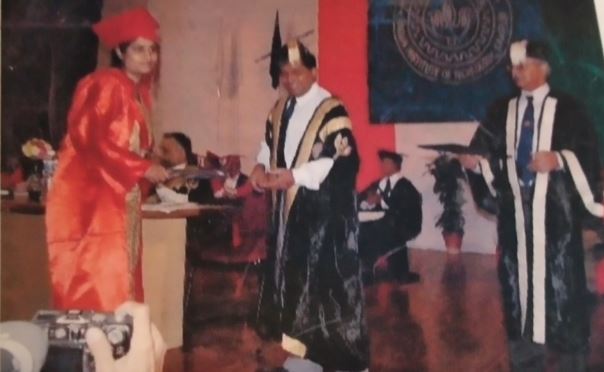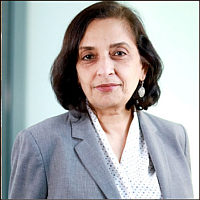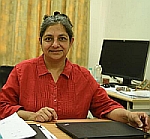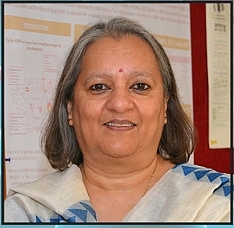
Dr. Jyotirmayee Dash is a professor at the Department of Organic Chemistry at Indian Association for the Cultivation of Science, Jadavpur, Kolkata. She is the recipient of the prestigious Shanti Swarup Bhatnagar Prize 2020. In an interview with DoRA office, she talks about her love for Chemistry, presence of women in STEM and, how her advisors, the famed Dr. Faiz Ahmed Khan, well known German Chemist Prof. Dr Hans-Unrich Reissig, renowned French chemist, Dr. Jainie Cossy and, highly acclaimed Sir Balasubramanian influenced her work.
What developed your interest in chemistry?
I had a passion for Science from a very young age. When I was in Higher Secondary, I found Chemistry very intriguing as it plays an important role in our daily life. Thus, I opted for Chemistry as my major subject during my BSc. Subsequently, my interest grew more in Organic Chemistry, and I studied MSc with an Organic Chemistry specialization in Ravenshaw College, Odisha. My family, school and college professors sparked a scientific interest in me for higher studies. Always fascinated by wonders of nature, the creation of new molecules captured my interest to pursue my doctoral studies in the area organic chemistry at IIT Kanpur. There I realized that chemistry is the central creative science that can be explored at the interface of other disciplines of science and engineering.
You are one of the few women SSB Prize awardees. This speaks volumes about the presence of women in STEM, especially in India. What challenges do you think girls/women face while pursuing their dreams in STEM? How do you think it can change?
The gender disparity for women in STEM is not only found in our country but all over the world. The gender gap in science and engineering is found to be more in number than in other professions. Although a good number of female students take science in graduation and post-graduation, the decline starts from masters to PhD and then a sharp fall is visible at the transition from PhD to independent research. Consequently, only a handful of women get nominated for awards and recognitions.
The lower participation of women in STEM is due to various reasons. One important reason is social and cultural hindrances. The dual responsibility of managing work life and raising a family make it much tougher for women. A profession where work and family balance can be easily maintained seems feasible. However, in academia, long working hours and perseverance are constantly required. In addition, enough role models are not found.
Family support is one of the essentials for academic success. Interest can be infused in young women by schools, colleges that a particular discipline of science and technology can be relevant to many professions. Young minds can be inspired with examples of successful women in science and technology.
In the words of nuclear physicist, Marie Curie's granddaughter, Hélène Langevin-Joliot, “we have to change the mentality that men are better scientists”. Women are competent at multi-tasking and have necessary skills to be successful in research. Over the years, there has been a steady rise in number of women in STEM and they have been successful in all spheres of STEM. They have been honored with accolades and recognitions.
How does your research work impact the real world?
My research group has been involved in interdisciplinary research combining organic chemistry with biology to develop new paradigms in medicinal chemistry and nanotechnology. The research in my lab has two major outcomes: a) new therapeutic tools for cancer and, b) new biomolecular systems.
My group works on a multidisciplinary scientific setting in order to address problems related to human health. The most interesting aspect of my research is designing and engineering chemical entities using new and established methodologies to target previously undruggable biological molecules. From a chemist’s perspective, I can design molecules with desired functional groups, structure or topologies for targeting new biological targets and modulating important cellular functions. We have developed small molecules for understanding the role of nucleic acid secondary structures in the regulation of gene expression. We have reported new tools for targeting DNA secondary structures like G-quadruplexes and i-motifs by small molecules. These molecules show potent anticancer activities. My research program has contributed to several drug like candidates, interesting biomolecular devices and biomimetic systems.
Why did you choose academia over industry after your PhD?
The never ending quest for knowledge has always propelled me to discover new things. Although, industry also plays a key role in serving mankind, I chose academia because I believe basic research is crucial for long-term benefits to humanity that can be well pursued in the realms of academia. Furthermore, I wanted to play a role in teaching and training young and budding scientists and scholars. Another important reason why I chose academia was to connect with eminent scientists who can inspire, mentor and advise them along the academic journey

Your ‘parents’ in Chemistry Tree are Faiz Ahmed Khan, Hans Reisig, Shankar Balasubramanian et al. How did they inspire you?
I completed my doctoral degree in the area of Organic synthesis under the supervision of Professor Faiz Ahmed Khan, an eminent Organic Chemist in our country. My journey as a researcher began at IIT Kanpur where I gained expertise in a range of organic chemical transformations. I also had learned the importance of hard work and dedication in researchSubsequently, I worked as a postdoctoral researcher with Professor H. U. Reissig at F. U. Berlin, Germany where I was awarded the prestigious Alexander von Humboldt Fellowship. Professor H. U. Reissig has been a great and helpful mentor. I worked on transition metal catalysed transformations to synthesize biologically active heterocyclic compounds.
Then, I moved to ESPCI Paris to work as a postdoctoral researcher in the group of Professor Janine Cossy, a renowned scientist. Her dedication inspired me to continue higher studies diligently. There, I worked on multi-step synthesis of natural products.
During this time, I was intrigued to explore my expertise in synthetic Organic Chemistry towards biology. Subsequently, I was awarded with the highly competitive Marie Curie Fellowship, which provided me an opportunity to work at the University of Cambridge, with Professor Sir Shankar Balasubramanian, a leading expert in the field of chemical biology of nucleic acid, who developed next generation sequencing methodology for sequencing of human genomes. In this period, I grew a keen interest on nucleic acid research. Professor Shankar Balasubramanian has been a very supportive mentor throughout my research career.
After starting my independent career, I had the opportunity to visit the group of Professor Stephen Mann, University of Bristol, USA. There I was introduced to the field of self-assembly and nanomaterials.
With a varied expertise in Organic synthesis, Chemical Biology and Nanotechnology, I have been motivated to explore interdisciplinary research in Chemistry and Biology.
I was very fortunate to have excellent mentors throughout my research journey. They have infused interest and scientific ethics in me.
How is the approach to research different in the US/Europe from India? What can Indian educational institutions do to raise their research standards?

In US/Europe, there are opportunities to explore in a multicultural research environment using advanced scientific techniques and state-of-the-art instruments with national and international funding systems. One can learn innovative techniques and work in diverse settings. The system is highly advanced to procure reagents, chemicals and other lab essentials quite fast in comparison to India. The research proposals are of high standards and there is an opportunity to work with stalwarts and world experts in different disciplines in top Universities of the world.
In recent times, the standard of higher education has been rising in India and the quality of research and infrastructure are advancing. High quality research is also possible in our country. Many scientists gaining exposure in US/Europe are coming back to India and getting involved in education and scientific research. Bridging the gap between academia-industry and establishing collaborative research in different disciplines within and outside the Institute could boost the current research standards in India.
How can industry and academia collaborate to produce cutting-edge technology?
Industry generally pursues applied research projects with immediate benefits to the society. Academic research leads to innovative discoveries. Academia-industry collaboration should not only deal with give and take policy, but there should be interactive participations by both sectors leading to cutting-edge technology transfer for commercialisation. There should be provision for funds to support innovative entrepreneurship. The scope of academia-industry collaboration should be extended to a broad range of disciplines, thereby making a difference in lives of people and strengthening the economy of our country.
What is the role of alumni in strengthening the image of IITK?

The alumni need to participate in alumni association and attend a few events regularly. The alumni can become a resource of inspiration and mentor students and other fellow alumni in their areas of expertise. The alumni association can contribute towards developmental activities of the institution as a gesture of gratitude to their alma mater.
What message would you like to give to girls who wish to pursue their career in STEM?
Women today are capable of doing exceptionally well in all disciplines making our country proud through their efforts and hard work. The STEM arena is vast and has a lot of potential for women to get involved. I would encourage young girls to pursue a career in STEM as a society can progress to its full potential when we all come together to participate and put our best efforts. Retention of women into senior roles in STEM could bring unique perspectives and creative ideas to scientific research and technology.





